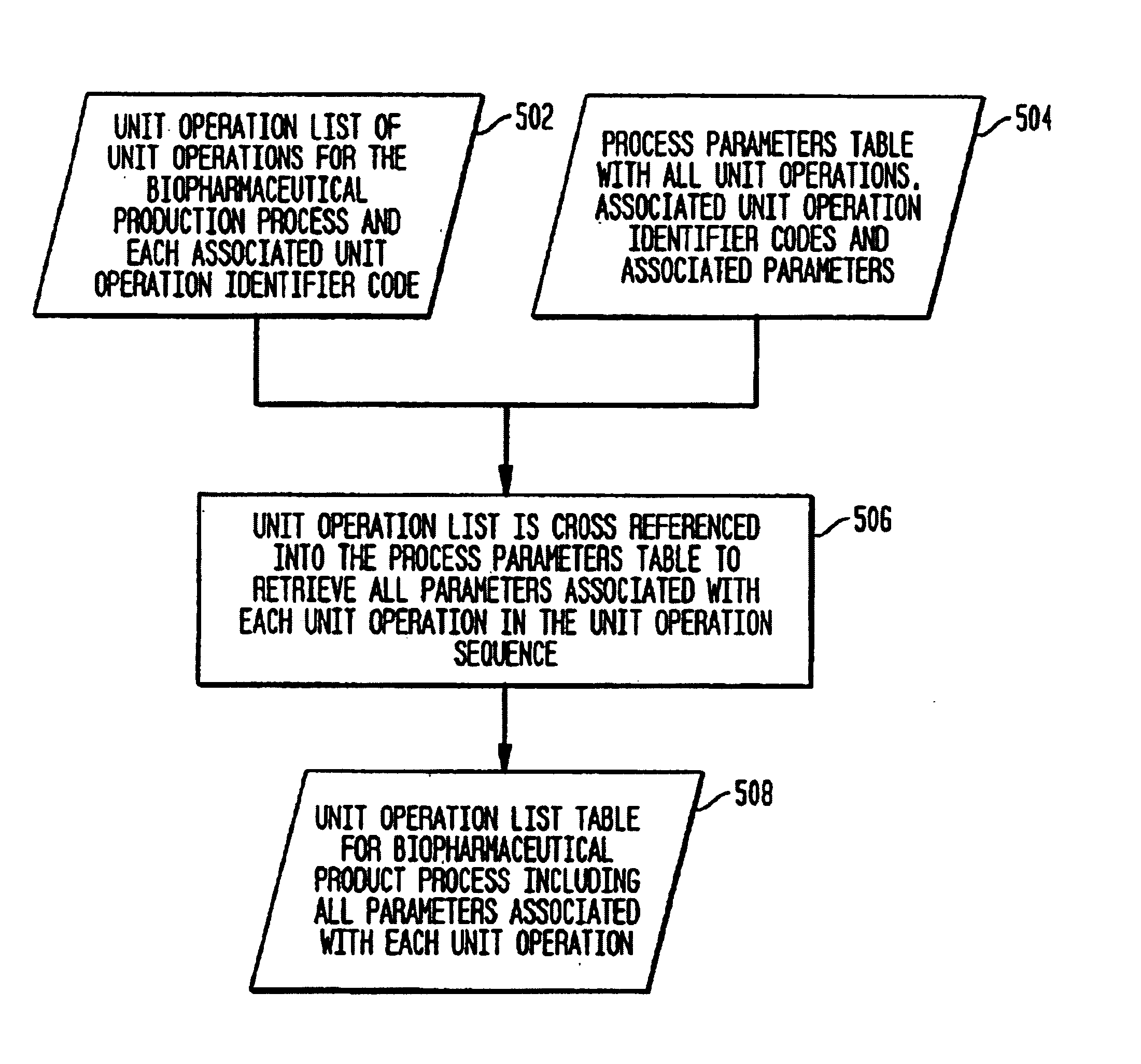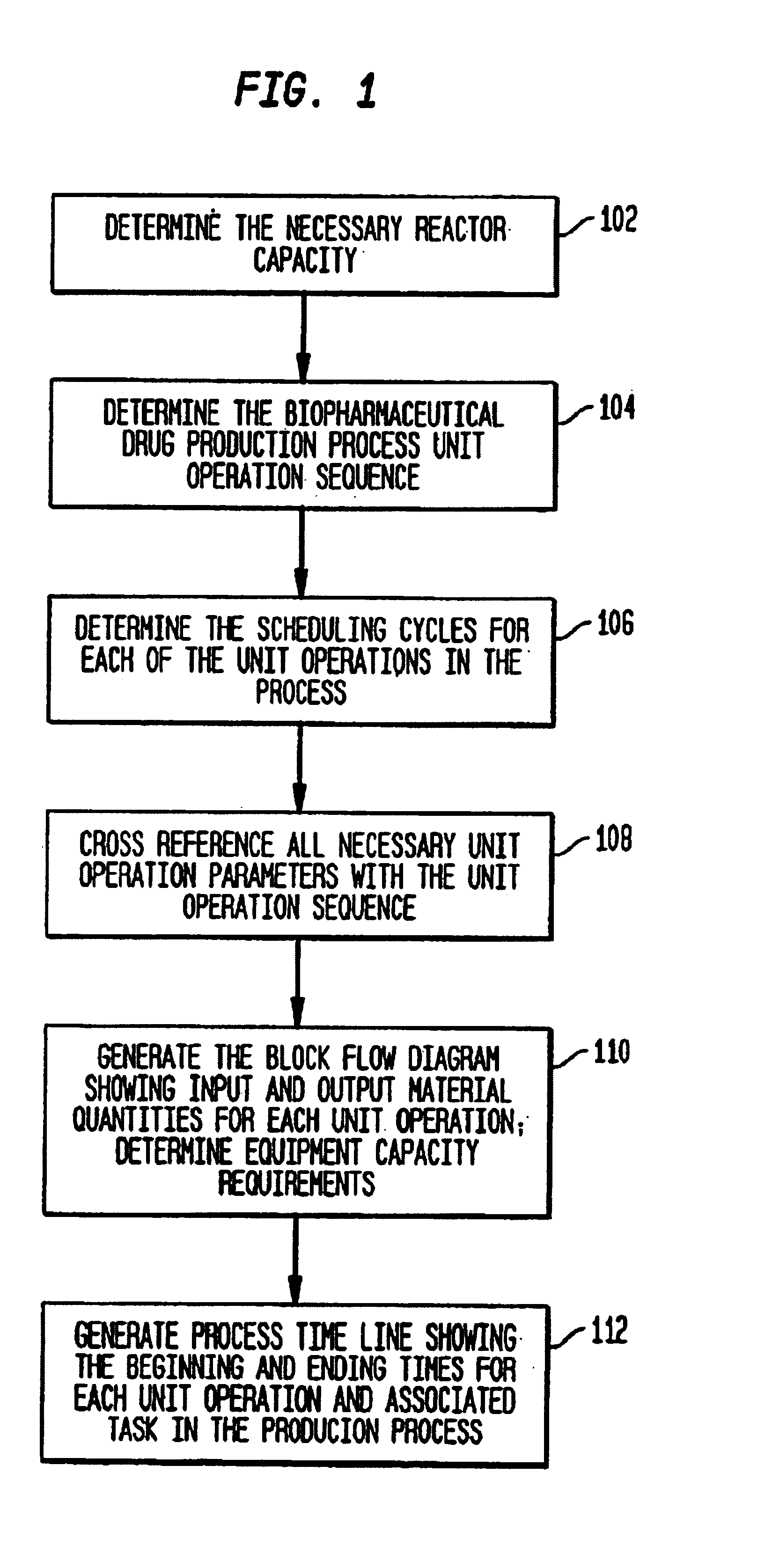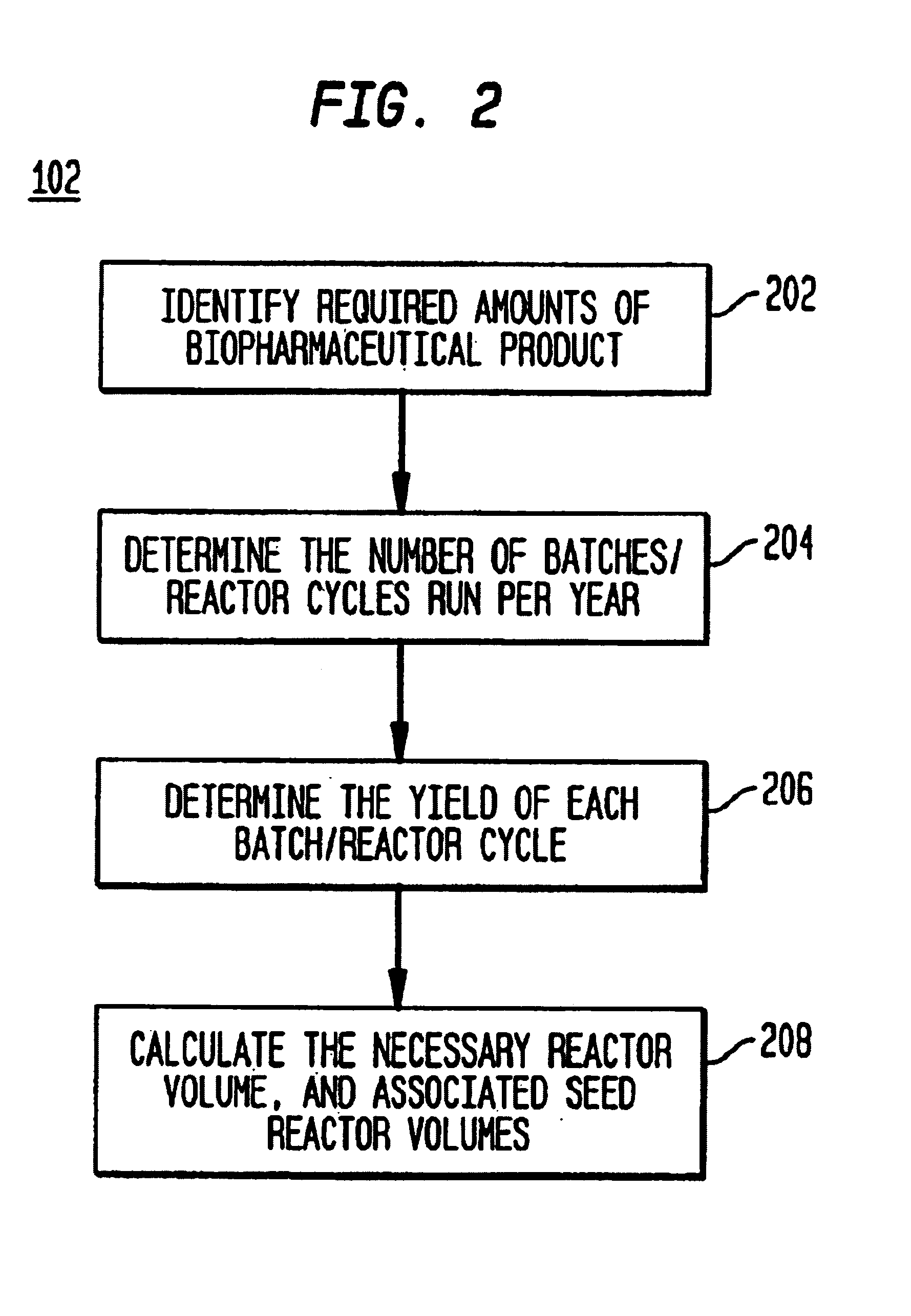Method for scheduling solution preparation in biopharmaceutical batch process manufacturing
a batch process and scheduling technology, applied in the direction of computer control, program control, instruments, etc., can solve the problems of complex biopharmaceutical production process, and high cost of biopharmaceutical plant design
- Summary
- Abstract
- Description
- Claims
- Application Information
AI Technical Summary
Problems solved by technology
Method used
Image
Examples
Embodiment Construction
1.0 Biopharmaceutical Batch Process Simulator
[0090]FIG. 1 illustrates a high-level flow diagram of the preferred embodiment. The process begins by determining the necessary reactor vessel capacity at step 102. The reactor vessel is the container in which the crude product is first synthesized. For example, in mammalian cell culture processes, the reactor vessel houses the mammalian cells suspended in growth media. Next, the unit operation sequence for production of the biopharmaceutical product is determined at step 104. The unit operation sequence is the series of unit operations that are required to produce the biopharmaceutical product. Each unit operation is an individual step in the biopharmaceutical manufacturing process with an associated set of manufacturing equipment. The unit operation list is the list of unit operations that make up the unit operation sequence and their associated sequence information. The unit operation sequence information is the information that define...
PUM
 Login to View More
Login to View More Abstract
Description
Claims
Application Information
 Login to View More
Login to View More - R&D
- Intellectual Property
- Life Sciences
- Materials
- Tech Scout
- Unparalleled Data Quality
- Higher Quality Content
- 60% Fewer Hallucinations
Browse by: Latest US Patents, China's latest patents, Technical Efficacy Thesaurus, Application Domain, Technology Topic, Popular Technical Reports.
© 2025 PatSnap. All rights reserved.Legal|Privacy policy|Modern Slavery Act Transparency Statement|Sitemap|About US| Contact US: help@patsnap.com



